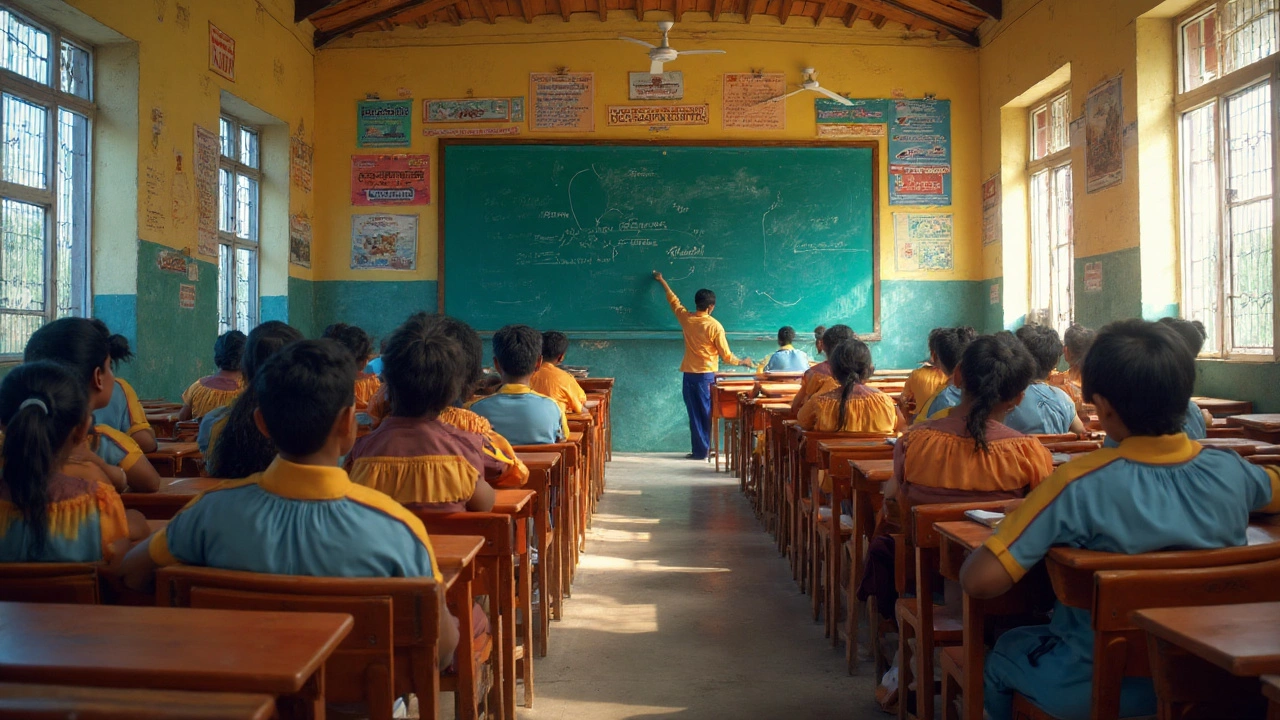School Differences USA vs India: A Practical Look
If you’ve ever wondered why a class in New York feels so different from one in Delhi, you’re not alone. Both countries have massive education systems, but they run on very different tracks. Below we break down the most visible gaps so you can see what’s at stake for students, parents, and teachers.
Teaching Style and Classroom Atmosphere
In the United States, teachers often act like facilitators. Classes are discussion‑heavy, with students encouraged to ask questions, share opinions, and work in groups. The vibe is usually relaxed; you’ll hear jokes, see casual dress codes, and notice a strong focus on critical thinking.
India’s classrooms tend to be teacher‑centered. The instructor delivers most of the content, and students are expected to listen, take notes, and memorize facts. Discipline is stricter, and there’s a higher emphasis on respecting authority. While group work exists, it’s less frequent than in the US.
Curriculum and Assessment
American schools follow a flexible curriculum that lets schools choose electives, AP courses, and extracurricular projects. Grades come from a mix of quizzes, projects, class participation, and standardized tests like the SAT or ACT.
Indian schools follow a national or state board syllabus—CBSE, ICSE, or state boards. The focus is on core subjects (Math, Science, English) and a heavy load of textbook‑based exams. Board exams at the end of Class 10 and 12 carry massive weight for college admission.
Because of these differences, US students often develop softer skills such as presentation and teamwork early on, while Indian students tend to excel in rote knowledge and high‑stakes exam performance.
School Hours, Holidays, and Extra Activities
American schools generally run from around 8 am to 3 pm, five days a week, with long summer breaks (about 10‑12 weeks). They offer a wide range of clubs, sports, and arts programs that are part of the school day or after‑school. In India, school days are longer, often 9 am to 4 pm, with a shorter summer vacation (about 4‑6 weeks). Extracurriculars exist but are usually limited to sports and a few clubs, and many students participate after school hours rather than during class.
These schedule differences affect how students balance study and leisure. US kids usually have more uninterrupted time for hobbies during the summer, while Indian kids often use the short break for tutoring or test prep.
Parent Involvement and Expectations
American parents tend to attend parent‑teacher meetings, volunteer for school events, and expect schools to communicate through newsletters or apps. They often focus on a child’s overall development, not just grades.
Indian parents are typically more involved in monitoring homework, arranging extra coaching, and emphasizing top scores. The pressure to rank high in exams is a common thread across many families.
Both approaches have merits – the US model nurtures independent thinking, while the Indian model builds strong discipline and academic depth.
What This Means for You
If you’re moving from one country to the other, expect a period of adjustment. Talk to teachers about the classroom style, ask for sample lesson plans, and let your child know it’s okay to ask for help. For parents, understanding these core differences can help set realistic expectations and support your child’s transition.
Remember, no system is perfect. The best outcome comes from blending the strengths of each – encouraging curiosity like in US schools while keeping the solid academic foundation found in Indian schools.
USA vs India: A Deep Dive into Which Education System Works Better
Explore how the Indian and American education systems really compare, with fresh facts and genuine insights. Unpack which one suits your goals and why.
